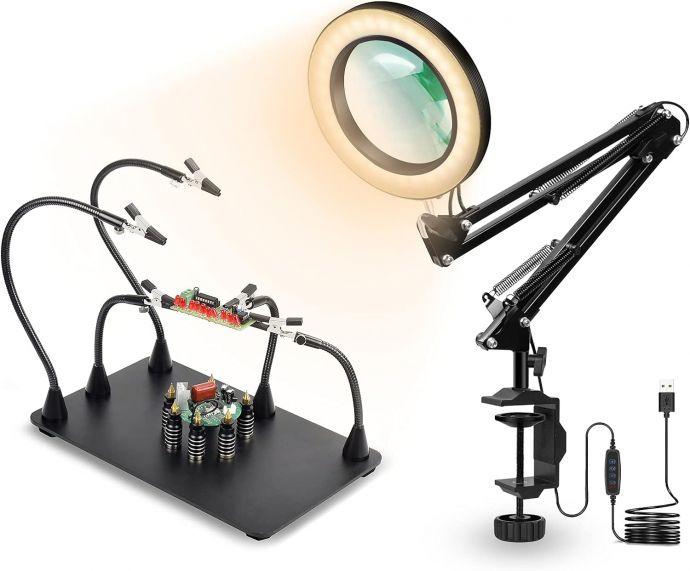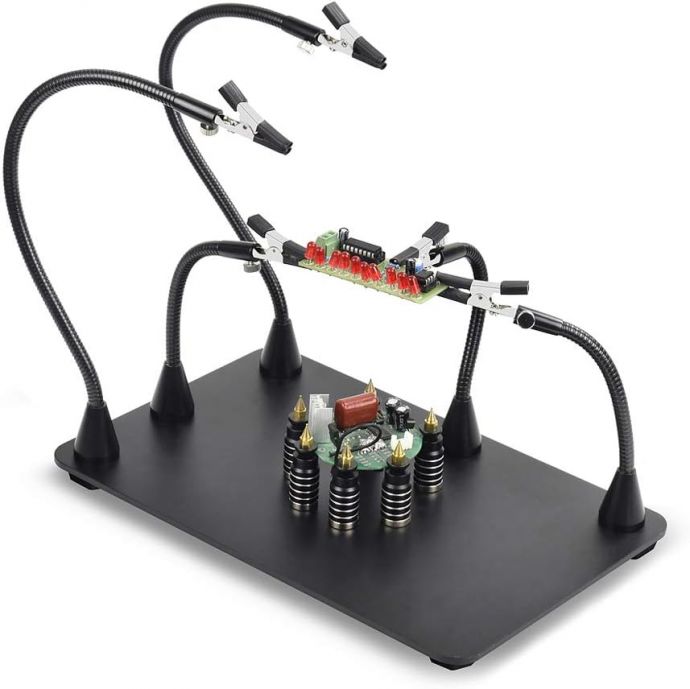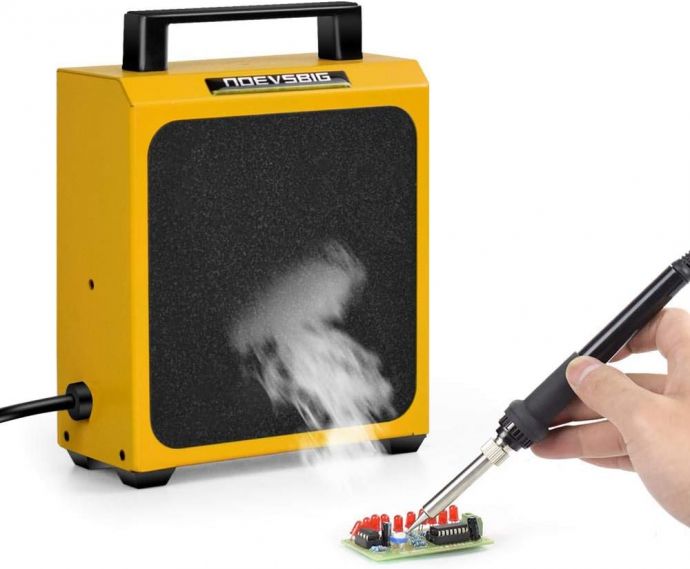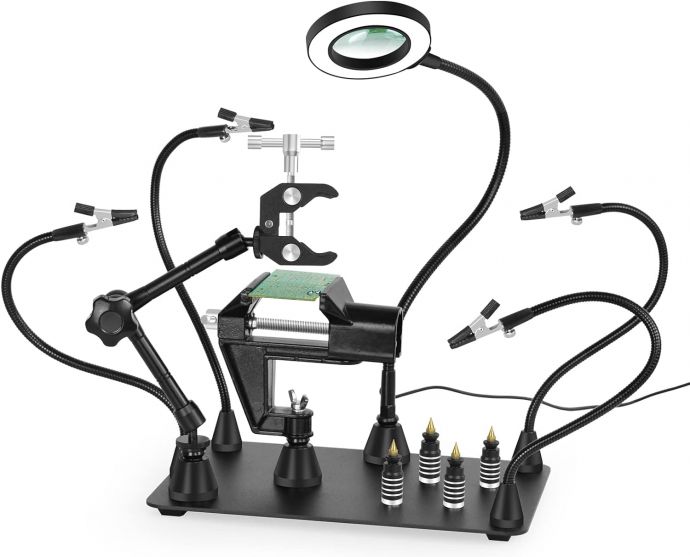In the realm of DIY projects and electronics workstations, ensuring a safe and healthy working environment is imperative. One of the most overlooked yet crucial aspects of this is addressing solder fumes, which can pose significant health risks when inhaled over time. Enter the world of solder fume extractors—a must-have for any workspace involving soldering. This article will guide you through crafting the ultimate 6.7 solder fume extractor, an essential device for safeguarding your health while perfecting your DIY skills.
### Understanding the Need for a Solder Fume Extractor

When soldering, the process emits fumes containing a mix of chemicals that can be harmful. Even though they might appear as simple smoke, these fumes include various substances such as lead (when leaded solder is used), flux residues composed of rosin or resin, and other chemical agents used in the soldering process. Prolonged exposure to these fumes can lead to respiratory issues, allergic reactions, and other health problems.
A solder fume extractor functions to draw away these harmful fumes from the work area, filtering the air to capture dangerous particles before releasing cleaner air back into the room. This is particularly important for small or poorly ventilated spaces where fumes can accumulate quickly.
### Essential Components of a Solder Fume Extractor

Before you begin assembling your ultimate solder fume extractor, it's crucial to understand the components required:
1. **Fan Unit**: At the heart of any fume extractor is a fan unit that provides efficient airflow. Choosing a fan with variable speeds allows for control over the suction power, making it adaptable to different tasks.
2. **Filter**: Filters are essential for trapping hazardous particles. These could range from simple activated carbon filters, which absorb fumes, to HEPA filters that can capture even finer particles.

3. **Hose/Pipe**: A flexible hose or rigid pipe is used to direct the airflow from the work area to the filter unit. The length and diameter of the hose can impact suction power.
4. **Enclosure/Frame**: The structural component houses the fan and filter. It should be constructed from durable materials that can withstand frequent use and potential exposure to chemicals.
5. **Power Supply**: Depending on the fan unit, a power supply mechanism is necessary. Many DIY projects use a simple AC power cord, but battery-powered or USB options are available for portable designs.

### Steps to Build Your DIY Solder Fume Extractor
#### Step 1: Gather Your Materials
Start by collecting all the necessary components:

- A computer cooling fan or a blower fan with a power rating suitable for the size of your workspace.
- A series of small activated carbon filters, often available as aquarium filters.
- Flexible duct hose, preferably with an adjustable clamp.
- A sturdy box or housing, such as a small metal or plastic container.
- Power adapter matching the fan’s voltage requirements.

#### Step 2: Design Your Extractor
Before starting the physical build, sketch a design. Consider how the components will fit together, ensuring easy access for changing filters. Pay attention to airflow direction and make sure the fan draws air towards the filter.
#### Step 3: Assemble the Frame

Using your sturdy housing, create an opening for the fan. Secure the fan in place with screws, ensuring the airflow direction is correct (usually indicated by arrows on the fan casing). Align the flexible hose so it attaches securely to the fan, allowing enough length to position the intake close to your soldering area.
#### Step 4: Install the Filter
Position the activated carbon filters in line with the airflow, after the fan but before the outlet. These may be mounted in a tray or holder that can easily slide out for cleaning or replacement. Make sure the filter creates a seal around the edges to prevent air from bypassing it.
#### Step 5: Connect the Power Supply
Attach your fan’s power supply to a safe outlet. If you're using a more portable design, ensure the battery pack is secure and easily accessible for recharging or replacement. Consider adding a switch for convenient operation.
#### Step 6: Test and Adjust
Before regular use, test your fume extractor. Check for any air leaks, and adjust the hose and fan settings to optimize airflow. Confirm that the filter is effective in capturing smoke by performing a simple smoke test with a lit incense stick—ensure no smoke escapes once the extractor is active.
### Enhancements and Upgrades
To further enhance your fume extractor, consider adding features like:
- **Noise Reduction**: Line the inside of the housing with sound-dampening foam to reduce operational noise.
- **Variable Speed Control**: Integrate a fan speed controller to adapt suction power based on task requirements.
- **Smart Features**: Install sensors or an IoT device to automatically activate the extractor when fumes are detected.
### Maintenance Tips
Regular maintenance ensures longevity and efficiency:
- **Filter Changes**: Replace the filter periodically based on usage frequency and manufacturer recommendations.
- **Fan Cleaning**: Dust and debris can accumulate on fan blades; clean them regularly to maintain airflow.
- **Hose Inspection**: Check the duct hose for cracks or punctures, as these can reduce suction efficiency.
### Conclusion
Creating your own solder fume extractor is a satisfying DIY project that not only hones your skills but also significantly enhances safety in your workspace. By understanding the components and following the steps outlined, you can build a reliable and efficient extractor that caters to your specific needs. Protecting yourself from toxic fumes while soldering is non-negotiable, and crafting this tool is an excellent investment in your health and project success.
Whether you're a hobbyist or a professional, mastering the art of fume extraction will ensure that every soldering session is as safe as it is successful. Embrace this DIY challenge and let your skills and creativity lead the way to a healthier, smarter workspace!









